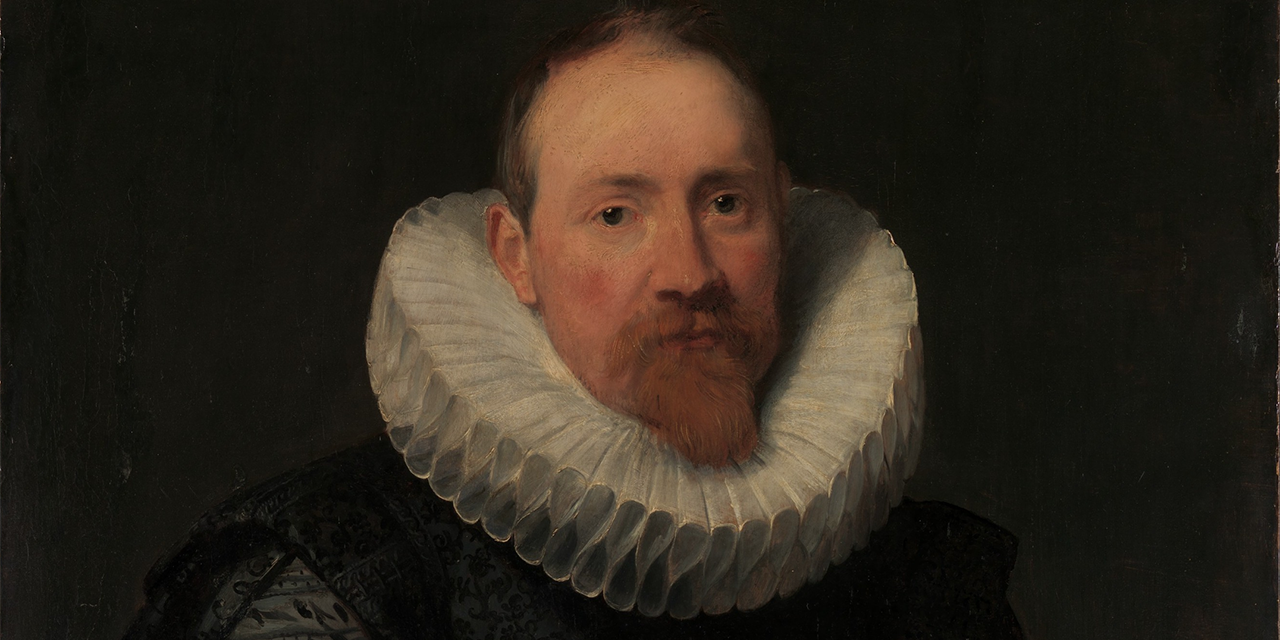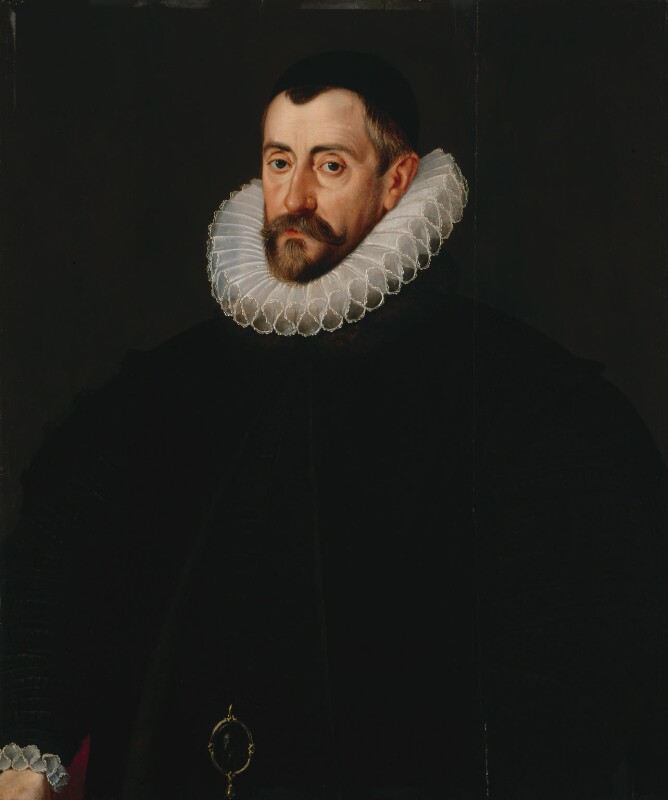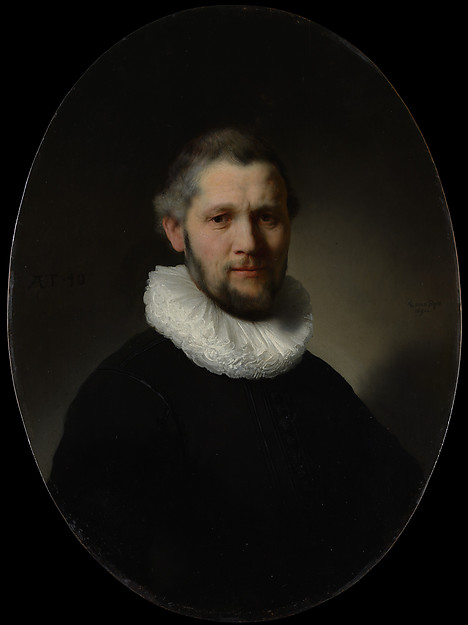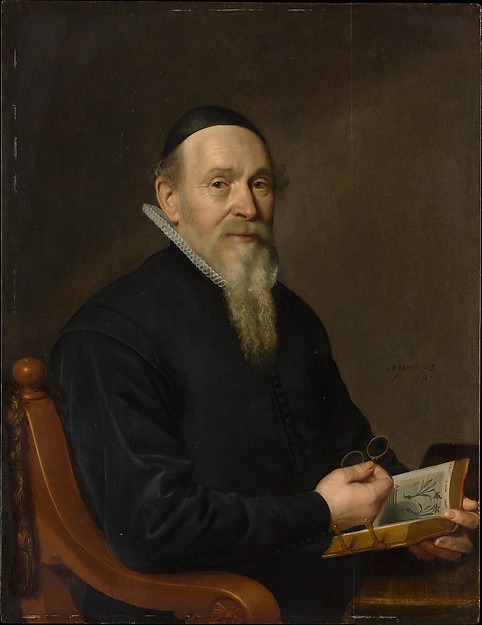Decorative removable pleated collar popular during the mid to late 16th and 17th century.
The Details
The ruff is defined in Fashion: The Definitive History of Costume and Style simply as: “A detachable pleated collar in linen and/or lace starched into shape and sometimes supported underneath” (Brown 455).
Of the ruff, Ruth Turner Wilcox of The Dictionary of Costume writes:
“A kind of stiffly starched collar completely encircling the neck, wider than a ruche, late sixteenth and early seventeenth centuries. By the 1580s the ruff was a large cartwheel, starched and wired. The width of the fashionable ruff was about a quarter of a yard wide and the length eighteen to nineteen yards of fine linen lawn or Holland cambric. A frame of wire covered with silk thread was worn under it, the edge of the ruff was also wired. Ruffs were starched in various colors, blue and green, with yellow a favorite and worn all over Europe.” (296)
The Dictionary of Fashion History defines the ruff as:
“A circular collar of cambric, lawn or similar fabric, in the form of a starched and goffered frill radiating from the neck; at first attached to the shirt collar band but by 1570 it had become a separate article. It was usually closed all round for men, but also worn by both sexes with a gap under the chin.
The tubular folds were known as sets and formed by moulding them by means of setting sticks. Ruffs were tied with tasselled band-strings.
Named varieties included the falling ruff worn ca. 1615 to 1640. This was gathered without being set into formal pleats, and was sewn to a high neckband from which it fell down to the shoulders. The short ruff was a small version favoured by Puritans during the early 17th century. The oval ruff, worn ca.1625 to 1650 was a female fashion only. It comprised a ‘large closed Ruff set in formal tubular pleats spreading laterally over the shoulders’; it was often worn with a beaver hat with a spreading brim. During the 17th century women’s ruffs sometimes had a small neck-frill of gauze or lace added to the inner border of the ruff.”
When discussing the introduction of the ruff and its various shapes and sizes (Figs. 1-4), Susan Vincent writes in The Anatomy of Fashion: Dressing the Body from the Renaissance to Today:
“The first of these was the archetypal Elizabethan fashion, the ruff. Having its origins in a small frill adorning the neckline of shirts and smocks, by the mid sixteenth century the ruff was an independent garment, worn by both men and women. It was with the production of English starch in the 1560s, however, that the ruff really came into its own. With this stiffening agent, and the added help of a wire frame beneath called a supportasse or underpropper, by the 1580s the ruff had assumed inventive variety and an immense size. Contemporary Puritan commentator Phillip Stubbes, whose moral framework had no place for pride and vanity, attacked the wearers of these ‘great and monsterous ruffes’ that ‘stand a full quarter of a yarde (and more) from their necks’. While Stubbes frequently employed hyperbolic language, his figure here of nine inches seems a reasonable estimate for the larger styles that so anatomized their wearers and isolated head from body in such a dramatic manner.”
Fig. 1 - Attributed to John De Critz the Elder. Sir Francis Walsingham, ca. 1589. Oil on panel; 76.2 x 63.5 cm (30 x 25in). London: National Portrait Gallery, NPG 1807. Purchases 1917. Source: National Portrait Gallery
Fig. 2 - Anthony van Dyck (Flemish, 1599–1641). Portrait of a Man, ca. 1618. Oil on wood; 106 x 72.7 cm (41 3/4 x 28 5/8 in). New York: The Metropolitan Museum of Art, 89.15.11. Marquand Collection, Gift of Henry G. Marquand, 1889. Source: The Metropolitan Museum of Art
Fig. 3 - Rembrandt (Dutch, 1606–1669). Portrait of a Man, 1632. Oil on wood; oval, 75.6 x 52.1 cm (29 3/4 x 20 1/2 in). New York: The Metropolitan Museum of Art, 64.126. Gift of Mrs. Lincoln Ellsworth, in memory of Lincoln Ellsworth, 1964. Source: The Metropolitan Museum of Art
Fig. 4 - Attributed to David Bailly (Dutch, 1584–1657). Portrait of a Man, Possibly a Botanist, 1641. Oil on wood; 83.8 x 62.2 cm (33 x 24 1/2 in). New York: The Metropolitan Museum of Art, 1982.60.29. The Jack and Belle Linsky Collection, 1982. Source: The Metropolitan Museum of Art
References:
- Brown, Susan, ed. Fashion: The Definitive History of Costume and Style. New York: DK Publishing, 2012. http://www.worldcat.org/oclc/840417029.
- Cumming, Valerie, C. W. Cunnington, and P. E. Cunnington. “Ruff.” In The Dictionary of Fashion History, 176. Oxford: Berg Publishers, 2010. Accessed September 27, 2017. https://www.bloomsburyfashioncentral.com/products/berg-fashion-library/dictionary/the-dictionary-of-fashion-history/ruff.
- Turner Wilcox, R. The Dictionary of Costume. London: B. T. Batsford Ltd., 1992. http://www.worldcat.org/oclc/456762613.
- Vincent, Susan J. “Head and Neck.” In The Anatomy of Fashion: Dressing the Body from the Renaissance to Today, 1–34. Oxford: Berg, 2009. Accessed September 27, 2017. http://dx.doi.org/10.2752/9781847888617/ANAOFFASH0002.














